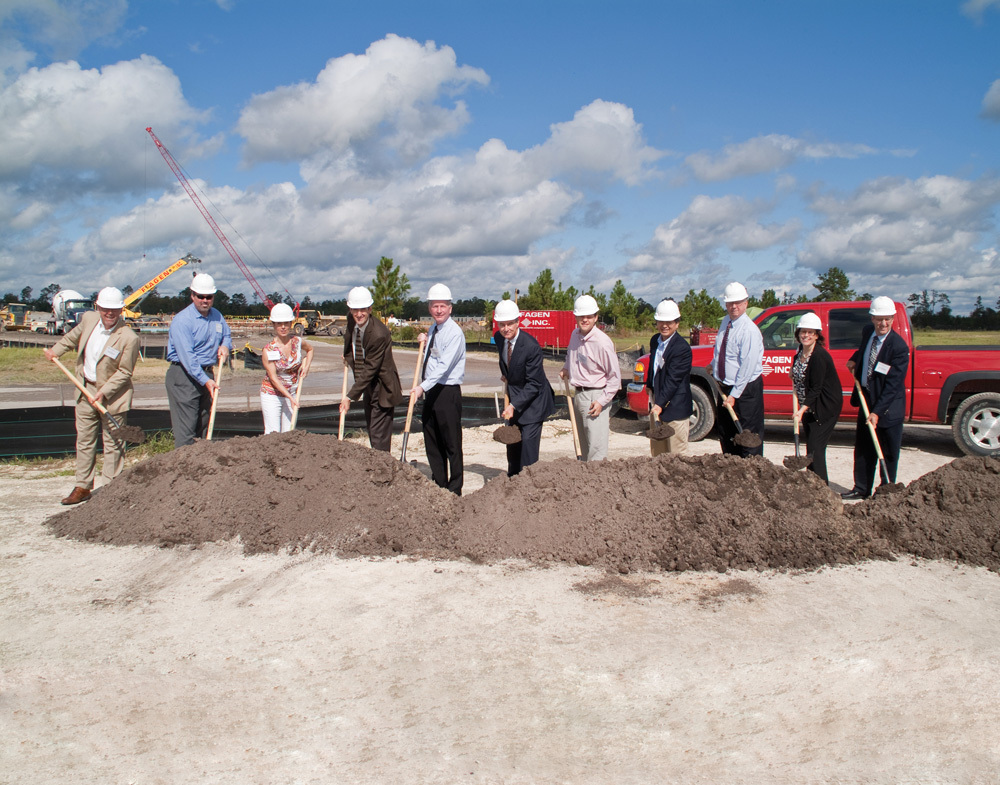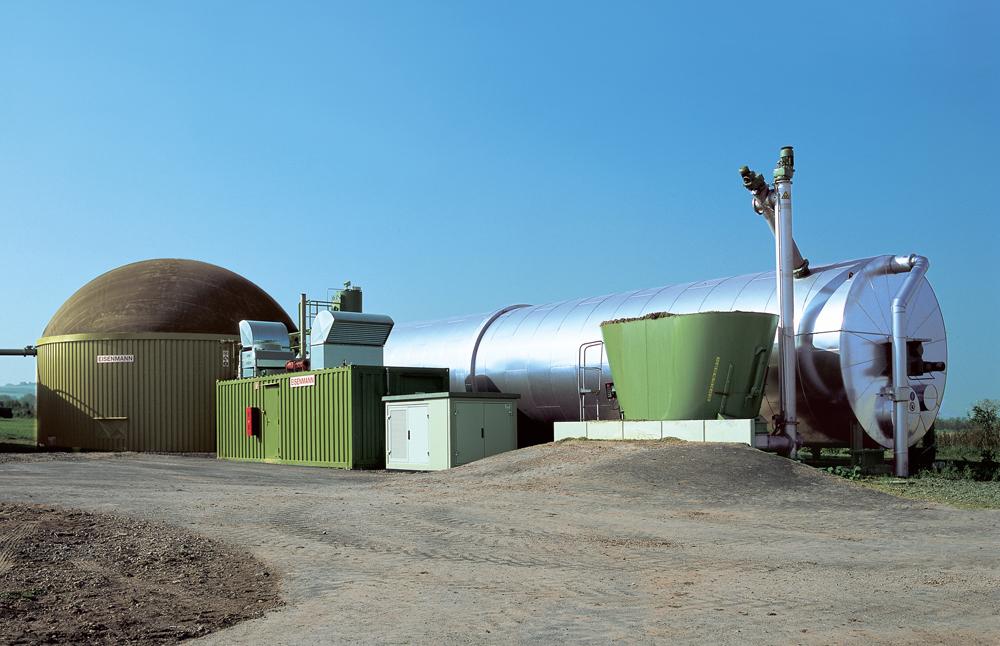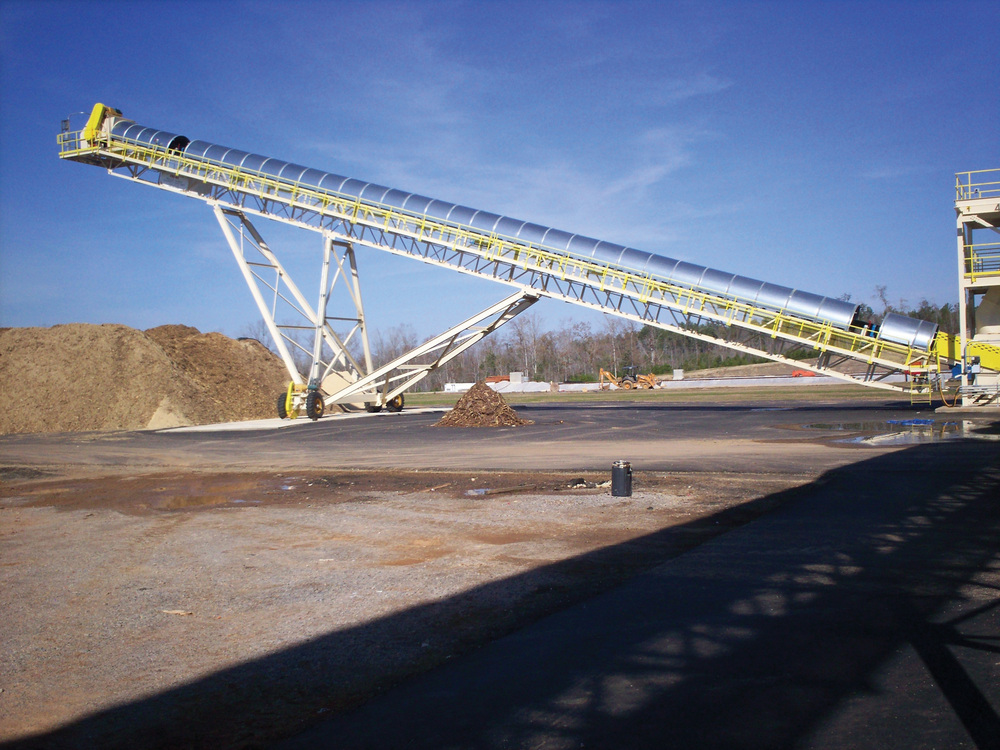Digging In










PHOTO: GAINESVILLE RENEWABLE ENERGY CENTER
November 22, 2011
BY Matt Soberg
As the need for renewable energy and energy efficiency grows in the U.S., businesses providing technology and equipment for new projects are in the best position to gauge the future of the biomass industry. With their finger on the pulse of biomass, these companies are optimistic about prospective opportunities in 2012.
Companies, such as Metso Corp., Eisenmann, and ProcessBarron, provide essential technologies, products and services to biomass project developers. These companies are in the trenches, and witness first-hand the flow of interest from potential investors.
Representatives from these companies report that biomass business and interest was solid in 2011 and ample opportunity exists for 2012 if the right pieces of the puzzle fall into place. These opportunities stem from a combination of aggressive developers who understand the need for less reliance on fossil fuels and to reduce emissions, the benefits of using biomass to produce energy and the impending shift toward using alternative fuels. Also, governments at the state level, through renewable portfolio standards are embracing renewable energy development as a job creation tool.
Trends are evident, including increased interest in cogeneration and anaerobic digestion. Although woody biomass is still the most common feedstock, some developers are turning to grasses and municipal solid waste.
The optimism is not without a bit of caution, however, as these grassroots leaders await pending decisions from the U.S. EPA regarding emission regulation and possible future mandates from government at all levels. The pending EPA reconsideration of the boiler Maximum Achievable Control Technology regulations looms large in the eyes of potential investors looking into biomass projects. In addition, the question of whether the federal government will step in with specific mandates, similar to those set in Europe places uncertainty on the industry.
Despite the guarded optimism, the economic trends are pointing in the right direction and the biomass industry’s future looks promising.
Mounting Megawatts
Showing how well business has been for Metso Corp., which provides renewable energy technology and products, the company will soon be the first in the U.S. with 250 megawatts (MW) of biomass boiler technology under construction at any one time, according to Robert Deneault, general manager of capital sales for Metso Power in North America. Metso has three large projects utilizing its fluidized-bed technology including the Gainesville Renewable Energy Center in Gainesville, Fla., developed by American Renewables, the Nacogdoches Power LLC biomass project in Sacul, Texas, owned by Southern Power, a subsidiary of Southern Co., both using bubbling fluid bed technology (BFB), and the We Energies/Domtar Biomass Energy Project in Rothschild, Wis., owned by We Energies and using circulating fluid bed technology (CFB).
“Metso had a fantastic year in 2011,” says Deneault, who is in charge of sales in North America. Through new equipment sales, Deneault is in the perfect position to evaluate Metso’s business performance. “The company was very fortunate to work with good projects that included strong developers who fully embraced Metso’s proven fluid bed technologies as vital to the success of their projects,” he adds.
Through the past few years, Deneault recognized a trend toward developers embracing cogeneration projects. Combined heat and power helps facilities, such as paper and pulp mills, to create renewable power and thermal from the same amount of fuel, thereby receiving a better return on investment.
Another trend noticed by various company representatives, some developers are waiting on projects due to the uncertainty created by emission regulations and mandates, Deneault says. Many are waiting to see what will happen with the pending boiler MACT rules, which are boiler standards set by the U.S. EPA that, although currently stayed, are under a period of reconsideration with proposed finalization by April 2012.
Despite the hesitation, Deneault believes that there will be a second wave of biomass projects once emissions standards and regulations are determined. “We need stability in the regulations,” he says. “We will see a more robust commitment from plants to utilize biomass when there is a commitment from governments who enact renewable portfolio standards that direct the use of biomass.”
Advertisement
Metso provides numerous services and Scandinavian-derived technology that include material handling equipment, plant automation systems and air pollution control systems, but the company is best-known for its BFB boiler technology. Many developers are interested in the BFB technology because of its beneficial emissions, efficiency and fuel flexibility.
Metso is proud of the Gainesville Renewable Energy Center developed by American Renewables, which includes a 100-MW Metso BFB boiler. It will be the largest BFB boiler in the world with the lowest emissions, Deneault says. “This is an industry watershed kind of boiler,” he says, adding that the construction groundbreaking occurred in October.
In Texas, Metso is supplying a 100-MW BFB boiler to the Nacogdoches Power biomass project, with commercial operation planned for the spring of 2012. Rounding out the 250 total megawatts under construction, the company will supply a 50-MW, CFB boiler for the We Energies/ Domtar Biomass Energy Project. Commercial operation of this Wisconsin plant is scheduled for 2013.
Metso is also breaking into gasification technology, through a small commercial plant in Scandinavia, which the company plans to bring to the U.S. once it is comfortable with the technology’s performance.
Mandate Momentum
Eisenmann President Mark West says his company noticed an uptick in the biomass industry in 2011 due to renewable portfolio standards enacted by state governments nationwide. “A lot of states are not waiting for the federal government to act,” he says. “At the state level, the states can’t afford to wait. They see biomass as a way of creating jobs that they must take advantage of now.”
Over the past year, business has been strong for Chicago-based Eisenmann, a supplier of environmental products and services, with the company involved in various projects. West specifically notes two projects as good examples of Eisenmann proprietary technology including the W2E Organic Power anaerobic digestion facility in South Carolina and the Wild Turkey Distillery wet electrostatic precipitator project in Kentucky.
West saw a common interest in renewable energy and energy efficiency across the industry in 2011. Energy has been relatively inexpensive in the U.S. of late, and West believes the cost will eventually increase due to overseas demand. When it does, the biomass industry will benefit on a private level, he says.
The biggest obstacle for developers was obtaining financing to proceed with projects. While developers were able to obtain power purchase and waste agreements, most were not sufficient in duration or stability to satisfy investors. Developers are not waiting for a mandate, however, some financiers are waiting for the government uncertainty to clear.
Thinking prospectively, West believes his company will see a number of projects receive funding in 2012. “Things will start to shake loose with the economy, and when they do, there are good opportunities and investments available for biomass projects,” he says. Once the ball starts rolling, the biomass industry will receive the momentum it needs to take business to the next level.
Advertisement
Eisenmann has experienced increased interest in anaerobic digestion (AD), installing more than 80 systems worldwide that also incorporate material handling and feedstock preprocessing equipment.
The company is providing AD technology for the 3.4-MW W2E facility, which is expected to be operational in 2012 and will process 48,000 metric tons of waste per year. “As the first of its kind in the United States, the Columbia facility marks a new way to reduce greenhouse gas emissions, while providing an alternative source of energy to the electrical grid,” according to Eisenmann.
The company’s wet electrostatic precipitator technology enables clients to meet current emissions and regulatory requirements. The precipitator is a pollution control system that removes multiple pollutants from system exhaust.
With an eye on emissions regulation, the Wild Turkey Distillery has utilized an Eisenmann wet electrostatic precipitator dual field system to provide air pollution control that produces near-zero opacity on emissions. The whiskey distillery in Lawrenceburg, Ky., requires the application of appropriate amounts of heat in the form of steam from multiple sources of energy. “Whatever the biomass fuel combination selected by the facility, the plant has multiple fuel options available while always maintaining environmental compliance,” according to the company.
Although wind and solar projects are popular and sometimes are more appealing to environmentalists, biomass waste and waste streams will gain increased momentum, West adds. Waste is constant. It is a matter of providing education on biomass and getting people to understand and embrace its benefits.
Massive Material Management
“We are committed to the biomass world as technology and interest is as high as it has ever been,” says Cliff Moss, vice president, director of materials handling for ProcessBarron. Specializing in design and installation of material handling systems, the company provides services and products from the ground to the boiler to the ash handling at the end of the process.
Business in 2011 was good for ProcessBarron, a company with 30 years of experience in boiler-related products and services. “We specialize in providing equipment around the boiler that will keep the boiler running reliably,” Moss says. The company has recently designed and supplied material handling systems for Eastern Illinois University, the University of Missouri and Frito-Lay. The company specializes in fuel, ash and air handling solutions for the biomass industry.
The project at Eastern Illinois, in Charleston, was a showcase system installation for ProcessBarron, according to John Saucier, the company’s system design and project manager. The biomass gasification facility will annually consume about 27,000 tons of woods chips to provide power and thermal to the university. ProcessBarron was provided a small plot of land on campus, and from there, it designed and installed the entire material handling system including a travelling screw reclaimer. The facility itself was designed to aesthetically mimic the surrounding buildings on campus.
Five years ago numerous feasibility studies were done to pursue biomass projects, but similar studies have fallen off lately. Being highly driven by mandates, Moss notes that developers may be waiting to see what the government is going to do with the boiler MACT regulations, which is a similar trend noted by other companies.
Similar to Metso, ProcessBarron is seeing certain trends in the industry, including cogeneration projects that contain the necessary infrastructure oftentimes for feedstock transportation purposes. In addition, the company is seeing a trend toward developers looking into advanced technologies such as gasification. Regarding feedstocks, wood is king, but the company also sees some developers leaning toward municipal solid waste and other feedstocks to create bioenergy.
An overwhelming theme that resulted from the discussions with all the industry leaders was that biomass is booming, and developers are persevering through uncertainty to make their projects happen.
Author: Matt Soberg
Associate Editor, Biomass Power & Thermal
(701) 746-8385
msoberg@bbiinternational.com
Upcoming Events





